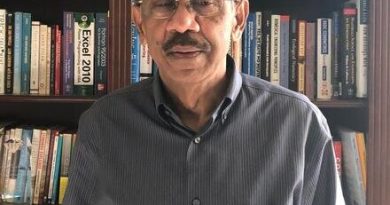Recovering From Long COVID: Thankful for the Little Things
Editor’s note: Find the latest long COVID news and guidance in Medscape’s Long COVID Resource Center.
Jennifer Henderson’s road to recovery from long COVID has been long and winding. The 54-year-old resident of Franklin, Ohio, lost her elderly mother to COVID-19 after the virus spread through her family in January 2021.
Although Henderson did recover from a serious bout of acute COVID, like millions of other Americans, her battle with long COVID was only just beginning. Symptoms such as anosmia (no sense of taste and smell) and parosmia (taste distortion) lingered for years. Both conditions caused a deep and life-altering depression that pushed Henderson to the brink of hopelessness.
Still, nearly 2 years later, she feels like one of the lucky ones after fully recovering from long COVID and the symptoms that for so long controlled her life.
She will always remember the moment her sense of smell returned after doctors at the Cleveland Clinic handed her a cup of coffee following what turned out to be successful treatment last year.
“I hadn’t smelled coffee in 2 years,” she said. “I still get emotional thinking about it.”
A survey of patients with self-reported olfactory loss after having COVID-19 found that, like Henderson, 43% experienced parosmia 6 months or longer after their initial infection. A distorted sense of taste occurs when the nose can no longer translate smells in the brain to properly distinguish between them. In some, the condition gets so bad that patients can barely eat, and as a result, they begin losing dangerous amounts of weight.
Henderson said she was lucky that she could still eat some foods. She was also lucky to escape many of the other long-COVID symptoms, such as fatigue, brain fog, and heart palpitations. Still, the lack of taste and smell took its toll on her life.
“Food tasted terrible, almost rancid, like rotten flesh,” Henderson said.
Nine months after her initial infection, she couldn’t choke down many of the foods that had been staples in her former life. Chicken, watermelon, cantaloupe, peanut butter — they all tasted either rancid or like chemicals. The list of foods that she could tolerate became shorter than those she couldn’t. Her “safe foods,” as she called them, were a random collection of foods that included sushi, berries, and yogurt. She could stomach them because they had no flavor at all.
A year into it, Henderson’s situation was getting desperate. She tried acupuncture and smell training and any other therapies that she thought might bring some relief. She had insomnia and went into a deep depression.
“People don’t realize how important these two senses are to everyday life, and if you’re not experiencing it, it’s hard for others to understand,” she said.
It wasn’t until she joined a Facebook support group for people with COVID-19-related parosmia and anosmia that she heard about a treatment called stellate ganglion block, which seemed to be working for some members of the group.
The treatment involves injecting anesthetic medication into the stellate ganglion, a collection of nerves located just above the voice box in the neck. Before the COVID-19 pandemic, the treatment was used for a host of conditions, including scleroderma, headaches, and posttraumatic stress disorder. But during the past year, doctors at the Cleveland Clinic found that the treatment provided some relief for long-COVID patients.
Henderson went to the Cleveland Clinic for the first time in November 2022 to see Christina Shin, MD, the anesthesiologist and pain medicine specialist who performed the procedure (first on the left side of her neck and then the right). Immediately after the treatment, doctors handed Henderson that fateful cup of coffee that heralded the return of her sense of smell.
When Henderson got home from her treatment, she immediately went to the bathroom to smell her perfumes. She could finally tell them apart. Two months later, in January 2023, she went in for another treatment, after which she started to regain her sense of taste. In March, she went back for her third treatment.
Shin said that she performed a stellate ganglion block, a nerve block that’s focused on the autonomic nervous system. It’s the system in the body that’s involved in “housekeeping functions,” such as heart rate, breathing, and blood flow.
Researchers aren’t completely sure why the procedure works, but doctors think that in patients with long COVID, the autonomic nervous system isn’t firing appropriately and that this causes a state of hyperactivity. Blocking the stellate ganglion seems to reset the nervous system in some way. It might also be that the autonomic nervous system is closely tied to immune function, and by blocking nerve activity, doctors are able to reduce the inflammatory immune response that seems to occur in those with long COVID.
Although the treatment is most well known for helping patients with loss of taste and smell, it has also been shown to be effective for patients with a variety of other long-COVID symptoms that are tied to the autonomic nervous system, said Luke D. Liu, MD, a pain management specialist and anesthesiologist in Anchorage, Alaska.
Liu is one of the first doctors in the country to perform the procedure for long-COVID patients. His research, published in the January 2022 edition of the Journal of Neuroimmunology, showed that the treatment allows the regional autonomic nervous system to “reboot.” It’s also been effective in treating brain fog, fatigue, irregular heartbeat, and dizziness.
Rajeev Fernando, an infectious disease expert and fellow at Harvard Medical School, says that what has been seen so far is promising but that much more data and trials are needed before it’s a recommended treatment for long COVID.
Research shows that although recovery from long COVID can take a long time, for many, symptoms dissipate. A May 2023 study published in the International Journal of Infectious Diseases found that 91% of long-COVID patients experienced improvement over a 2-period, but recovery was often slow and gradual; 5% recovered from the condition more rapidly, and 4% never recovered.
For Henderson, recovery has had its ups and downs. At the end of May, Henderson and her husband, along with another couple, went on a vacation to the Dominican Republic. She along with her husband and friend contracted COVID-19 at some point during the trip. This round “knocked her down both physically and emotionally.” She again experienced loss of smell and taste, as well as fatigue, diarrhea, and congestion.
But this time, she fared much better, and over a period of a month, much of her sense of taste and smell came back. Life is returning to normal, and the experience has made her more thankful for the little things — life’s pleasures that are taken for granted, such as cooking and smelling the laundry and her husband’s cologne.
Recently, Henderson took a cooking class where she learned to can tomatoes, and she could once again smell all the ingredients.
“I think in some ways,” she said, “my sense of smell has gotten better than it was before,” she said.
It’s a huge sense of relief for the amateur chef.
For more news, follow Medscape on Facebook, X, Instagram, and YouTube.
Source: Read Full Article



